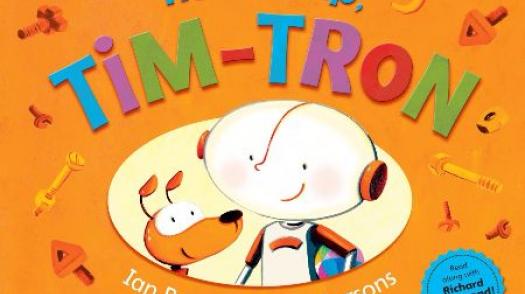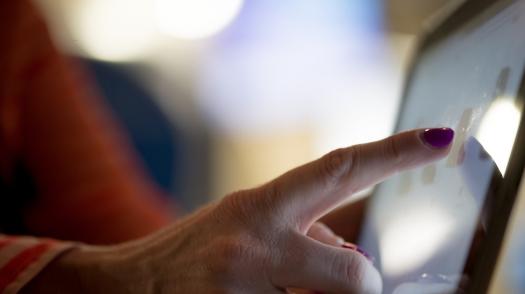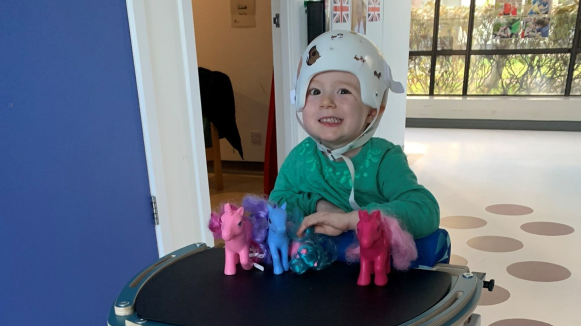On this page:
- What is a concussion?
- Symptoms of concussion in children and young people
- What you should do if you think a child or young person may have suffered a concussion
- Tips on preventing concussion in children and young people
- Recovery
- Returning to school
- Returning to sport and activity
- Post-concussion syndrome (persistent post-concussion symptoms)
- Concussion in babies and toddlers
- Tips on preventing concussion in babies and toddlers
What is a concussion?
Concussion is a type of brain injury that can alter the way a child’s brain functions. It can be
caused by either:
- a blow to the head
- something that causes the head and brain to quickly move back and forth or in different directions.
Effects of a concussion are usually short-term and are often described as a mild brain injury.
With the appropriate care and rest, most children should recover within about four to six weeks.
However, concussions can sometimes require emergency treatment and some people can have long-lasting difficulties after a brain injury.
My son collided with another boy during a football match. We all ran onto the field as it didn’t look good. He was out for a minute or so but it felt much longer and was very scary.”
Are children more prone to concussion than adults?
Evidence suggests that children, and in particular teenagers, are more likely to suffer a concussion than adults. Younger children are also at risk of concussion because their heads are disproportionately larger compared to the rest of their bodies.
Children’s brains are still developing and important connections between cells are still being strengthened. This process is known as myelination. Myelin is a protective coating around part of the nerve cells. Myelin in the brain is a bit like a coating of electrical wires with plastic to protect the electrical signal as it travels along a circuit. And because children have less myelinated brains than adults, they may be more susceptible to concussion.
What happens to the brain during and after a concussion?
The brain is surrounded by fluid and protective tissue which cushions the brain from light bumps and knocks to the head. But during a more severe blow to the head, or something that makes the brain move rapidly, this cushioning may not be enough to protect the brain.
Concussions generally do not show up on CT or MRI scans as they can’t detect the microscopic injury including chemical changes in the brain and damage to nerve cell function.
Symptoms of concussion in children and young people
The symptoms of a concussion can be very subtle and not always immediate. This means that a parent, teacher or sports coach could easily overlook the signs that a child or young person has had a concussion.
The symptoms listed below are signs that a person may be concussed but not all of these symptoms may apply. If a child or young person is showing even one of these symptoms, it may indicate a concussion. And sometimes symptoms don’t occur until a later stage.
It is important to remember that a person doesn’t have to lose consciousness for them to have had a concussion. They may remain conscious, but feel dazed or have other symptoms. Recent research suggests that a loss of consciousness is found to be a symptom in less than 14% of cases."
It’s not always easy to grade symptoms and categorise them from mild to severe. The below bullet points are meant to act as a guide if you are concerned that a child in your care has suffered a concussion. If in doubt, and the symptoms don’t fit into the ‘call an ambulance’ category, call 111.
For the following symptoms, call for an ambulance:
- cannot be wakened, unconscious
- difficulty staying awake
- extremely confused state
- problems in speaking, walking or balance
- numbness or weakness in part of their body
- vision problems with nausea or dizziness
- clear fluid coming from ears or nose
- bleeding from ears or bruising from behind the ears
- a black eye that wasn’t the result of a blow to that area
- a seizure or convulsion
- neck pain.
For the following symptoms, visit your nearest A&E department:
- woken up after being knocked out
- has memory problems
- a headache that doesn’t go away
- been vomiting since the injury
- significant changes in behaviour.
For the following symptoms, seek medical advice by phoning 111:
- headache
- feeling sick
- slight dizziness
- difficulty in concentrating
- double vision.
Symptoms associated with neck injury can be quite similar to those of concussion. These include headaches, dizziness and vision problems."
Subtle or delayed symptoms of concussion
Sometimes there are no immediate signs of concussion. However, symptoms can sometimes appear after a few hours or even days after the injury. It is therefore important to ensure that teachers, parents and anyone who cares for the child is aware of any recent bumps or accidents so that they can look out for warning signs in the following days.
What you should do if you think a child or young person may have suffered a concussion
- Remove them from play: As long as they haven't passed out and seem well enough to move, sit the child down, removing them from any sport or activity that they have been involved in.
- Talk to them: If they are at an age where they can hold a conversation, now is a good time to ask the child or young person a couple of questions about how they are feeling. The way in which they answer might help you determine if they have had a concussion. For instance, if they slur their words or seem confused, this would be a good indication that they are concussed.
- Get medical advice: While the NHS recommends that mild symptoms don’t require medical advice, it’s sometimes difficult to decide what might be mild. So, if there is even the smallest indication that they have suffered a concussion, it is a good idea to have them assessed by a GP or medic. Or you could call 111 for further advice on next steps.
- Rest: If a child or young person has had a concussion it is important that they get some rest (both mental and physical) and don’t do anything that might worsen symptoms.
Tips on preventing concussion in children and young people
Understanding concussion and its effects
It is important that parents, teachers and sports coaches know what to look for if a child has suffered a blow to the head. It is also equally important for children and young people to be aware of concussion. You can order a printed booklet of this information to help explain the symptoms to help them better understand the condition and the importance of the recovery process.
Following the rules
Knowing how to play a sport or game safely and by the rules is an important factor in preventing concussion.
Wearing and using recommended equipment
Ensure that the correct equipment and suggested protective accessories are used when taking part in sports and games.
Helmets: Compelling evidence shows that wearing a cycle helmet can reduce the risk of serious head injury by almost 70%. But cycling helmets and sport helmets are not concussion-proof. So it is important that children practice road safety and play by the rules in sports and games."
Road safety and car safety
Encourage positive road safety habits in children from a young age and explain the importance of wearing a seatbelt.
Recovery
Research suggests that children and young people can take three times longer to recover from a concussion than adults. Here are a few things that can speed up the recovery process:
When the doctor said our daughter had suffered a concussion, we were sent home with the advice of keeping an eye on her. We weren’t too worried, to be honest. Everyone has heard of concussion and we didn’t think it was too serious. But she really struggled to get back to her normal self, playing with her brothers and doing homework. She couldn’t concentrate and got tired very easily. It was then that we realised the full impact the concussion had on her. It took a lot of rest and several calls and visits to the GP for support and advice for her to fully recover.”
Rest
Some time off school can be a huge benefit to a child or young person who has suffered a concussion. Excessive physical activity should also be avoided for at least 24-48 hours.
Children should avoid activity that may result in a second injury before the brain has recovered from the first and should avoid too much physical exertion – but not be totally sedentary (Giza, 2018). Research has found that those who had no activity had longer post-concussion symptoms.
Observation
Look out for any changes in behaviour or difficulty in concentrating following a brain injury in the first few days. If changes do occur you should seek medical advice. Ensure that people around the child or young person are aware of the injury so that they can seek help if necessary.
Medication
A GP may advise that a child should have paracetamol for pain or headache. Avoid aspirin or anti-inflammatory medication as this could cause bleeding. If a child is in pain, seek advice from a GP.
Gradual return to school and activities
It is advised that children do not need to be completely symptom-free to start the process of going back to school but that modifications should be made to suit their needs following the concussion. This might mean longer breaks or shorter days. If school and activities bring on new symptoms or make current ones worse, activities should be decreased.
Research suggests that a brief rest should be followed by the gentle re-introduction of cognitive and physical activity (cognitive activity involves thinking and could include drawing, card games or problem-solving). Early aerobic exercise, such as brisk walking, has been found to improve the time to recover after sports-related concussion compared with stretching exercises (Leddy 2019).
Trust your instincts
Don’t be afraid or embarrassed about getting more help, even if a GP or doctor has given the ‘all clear’. If you feel that something isn’t quite right with a child following a concussion or possible concussion, get further help from the GP or call 111 to explain your concerns. It’s often people closest to the child who realise that they are acting differently or suffering from the effects of concussion, and need further support in their recovery.
Returning to school and activity
Experts at The National Acquired Brain Injury in Learning and Education Syndicates (N-ABLES) have developed recommendations for the return to school and activity to help brain recovery following a head injury.
Download the Concussion: Return to school guidance
Returning to non-elite (grassroots) sport
The Government and Sport Recreation Alliance have developed a step-by-step guide to returning to sport following a head injury. UK Concussion Guidelines for non-elite (grassroot) sport – links to official guidance.
Download the UK Concussion guidelines for non-elite (grassroots) sport
Post-concussion syndrome (persistent post-concussion symptoms)
There are a few things that are sometimes linked to a longer recovery time for some children and young people. These risk factors include:
- if a child has been concussed before
- children being of a younger age
- previous diagnosis of attention deficit hyperactivity disorder (ADHD)
- mental health issues
- if a child has had a prolonged loss of consciousness.
Sometimes a child who has suffered a concussion will develop a collection of symptoms that last weeks, months or possibly longer. This is called post-concussion syndrome (or persistent post-concussion symptoms) and can lead to significant difficulties for a child.
If a child has suffered from a concussion and has been having some lasting difficulties or ongoing effects, they could possibly have post-concussion syndrome.
Symptoms include:
- headaches
- dizziness
- fatigue/tiredness
- insomnia; where the child finds it difficult to sleep
- irritability
- anxiety
- loss of concentration or memory difficulties
- noise and light sensitivity
- tinnitus; a ringing in the ears.
If a child is diagnosed with post-concussion syndrome, options should be discussed with the child’s GP. They may be referred to a specialist or rehabilitation service to support them in dealing with some of the effects or difficulties they are having.
If you feel that your child is having ongoing difficulties, as mentioned above, The Children’s Trust Brain Injury Community Service may be able to provide support."
Concussion in babies and toddlers
A concussion can happen at any age. Accidents can happen and as babies and toddlers learn to crawl, walk, run and play a little more roughly with toys, it is quite common for them to have a few bumps to the head. And they are at an age where they don’t fully understand the concept of risk or danger.
Concussion can also happen to a baby or toddler through non-accidental causes.
Some common causes of concussion in infants and toddlers:
• falls from beds
• bumping into something or being hit by something
• being dropped from a carer’s arms
• car accidents
• non-accidental causes (including forceful shaking).
It can be more difficult to spot signs of concussion in babies and younger children as they may not able to tell you how they feel.
Call 111 or visit A&E: If you think a baby or toddler has had a significant injury to the head or they are showing any symptoms listed above.
Call an ambulance: If the symptoms are more severe, for instance if they are unconscious or are having a seizure/fit.
Some things you should look out for:
• persistent crying
• loss of balance
• poor coordination
• possible headaches; persistent rubbing of the head
• vomiting
• change of usual mood, such as irritability or difficult to console
• changes in sleeping pattern
• unusually sleepy or listlessness
• sensitivity to light and/or noise
• will not eat or drink
• seizures/fits
• visible bruises/marks on the head
• unusual fluid from nose, mouth or ears.
I just turned around to get a nappy and some wipes and when I turned back my baby was slipping off the bed. It happened so quickly, in slow motion, but I couldn’t do anything. Although he soon settled, I took him to A&E just to make sure. He was absolutely fine but I spent the rest of the day paranoid and inspecting him for injury."
Tips on preventing concussion in babies and toddlers
Floors free of clutter
If a child has just learnt to walk try to keep the floor free from toys or obstructions that can be tripped over.
Buckle up
Always use the straps in a pram, pushchair or highchair. And always ensure that car seats and booster seats are properly installed and age-appropriate.
Stair safety
Fit a safety gate at the top and bottom of your stairs.
Furniture safety
Anything that is at risk of being pulled down, such as heavy ornaments, should be out of reach. And furniture, such as bookcases, should be secured to the wall.
Never leave babies unattended on raised surfaces
This includes beds. Even if a baby has not started rolling yet, it is surprising how their natural kicking and fidgeting can lead to a fall. That one time you leave them on a bed, might be when they learn to roll for the first time. And never leave a baby’s car seat or bouncer on a table or other high surface.



